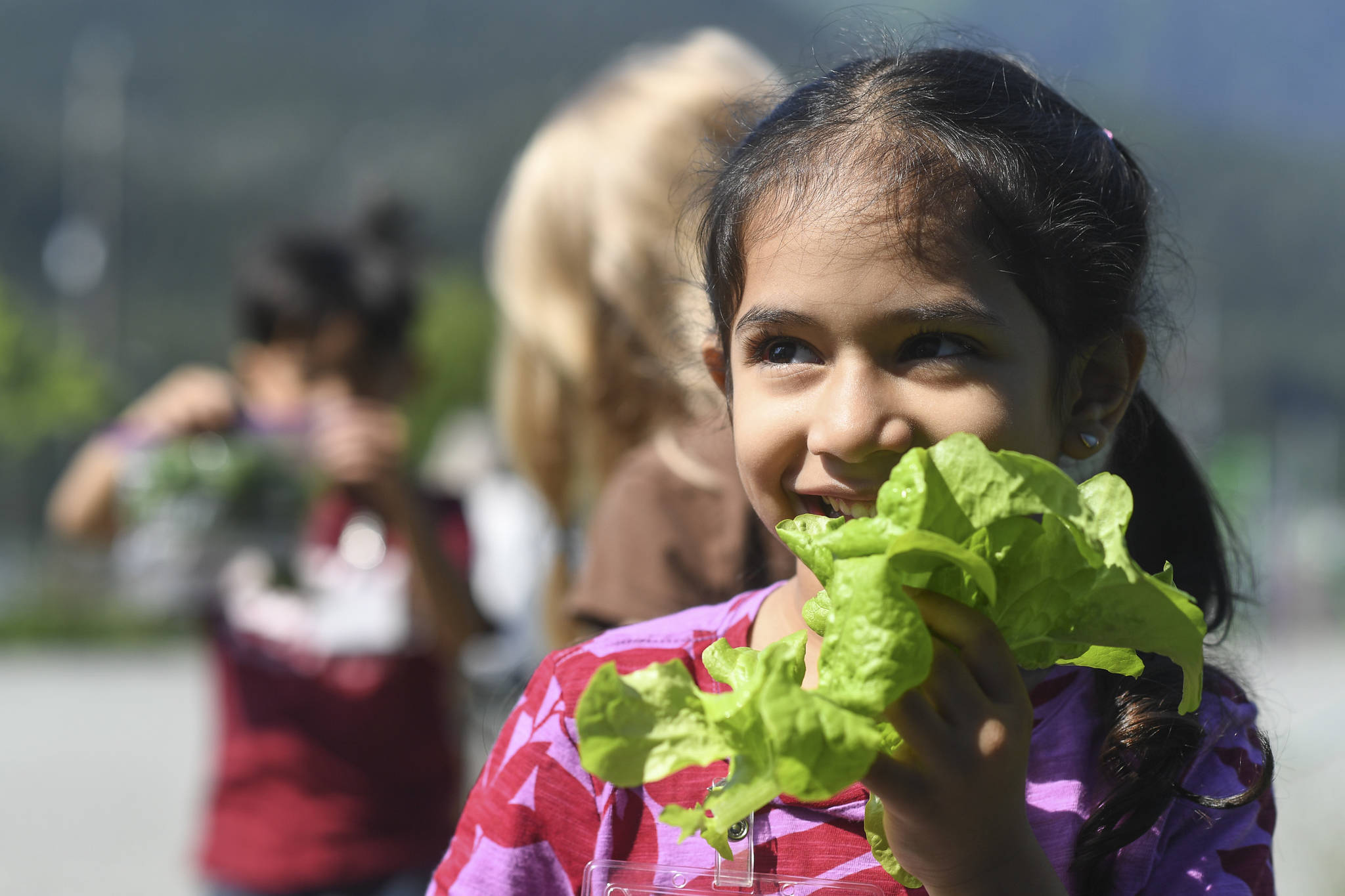Gina Athwani held up a hefty handful of lettuce before smiling and taking a big crunchy bite out of the leafy greens.
The 5-year-old then held her arms in a mock bunny rabbit pose before hopping away to join other children playing at the Harborview Elementary School Playground.
“I like chopping it, eating it, crunching it,” Athwani said.
The lettuce that Athwani enjoyed was grown in a garden supported by more than $8,000 from Farm to School Alaska grants awarded to Juneau School District summer programs. The Alaska Department of Natural Resources Division of Agriculture Farm to School Program helps educators incorporate agriculture into the classroom.
[Vetoes could wipe out 20 percent of Glory Hall budget]
Adrianne Schwartz, Food Services Supervisor and Energy Manager for Juneau School District, told the Empire it isn’t the first time Juneau schools were awarded Farm to School grants, but it is the most money the district has received.
The Recreation Arts Learning Leadership for Youth programs at Riverbend Elementary School and Harborview each were awarded $2,500. Harborview Connect! was awarded $1,772, and the Learning Enrichment After school Program at Glacier Valley Elementary School $1,500.
“Students learn where food comes from, how plants grow and hopefully they’ll try new food that they’ve grown or seen grown,” said Julie Leary grant coordinator and Harborview Connect! site manager, in an interview. “And the hope is that they’ll enjoy eating it.”
The program seemed to be checking off all of those boxes last week with the kids at Harborview.
“It was pretty fun,” said Emery Marte, 11. “My most favorite part was eating all the vegetables.”
She said she particularly liked the celery, which she wanted to use in cooking at home.
“It goes with all our Filipino dishes,” Marte said.
Master gardener Joel Bos, who works with the LEAP and Connect! programs, and Leary said other vegetables grown at school gardens included bok choy, tomatoes, kale, miner’s lettuce and more.
Most of the gardens already existed or were being built at the time the grants were received, Leary said, but the extra money has helped.
[Capitol columns get some care]
Bos told the Empire students seem excited to learn about and try new vegetables. When he arrived to hand out greens at recess, students lined up like an ice cream truck had stopped at their playground.
“I think they’re into it — especially the miner’s lettuce,” Bos said. “The kids will just eat it with nothing on it. I think the only reason we don’t see it in the grocery store is because it bruises easily.”
Miner’s lettuce gets its name because fields of it in Northern California were a popular source of food during the gold rush, Bos said.
The grant money is being used to support like field trips to Douglas Island Pink and Chum, Inc. and Auke Village Recreation Area, so kids can learn about fishing and the role environmental health plays in producing healthy food, said Cheryl Glen, RALLY supervisor.
“It makes for a fun summer,” Glen said.
She said it also helps establish a permanent connection to the concepts.
“It’s just getting out there and having that hands-on experience, that’s what cements it into our beings,” Glen said.
The grants also allowed for summer breakfast and lunch options that incorporated Alaska-grown foods, such as kale chips and rhubarb crisp, Schwartz said.
She said the district would like for the program to continue to grow in the future.
“We’re looking to expand,”Schwartz said. “We’re looking to have a garden at each of our schools, so every student has the same opportunity.”
• Contact reporter Ben Hohenstatt at (907)523-2243 or bhohenstatt@juneauempire.com. Follow him on Twitter at @BenHohenstatt.

